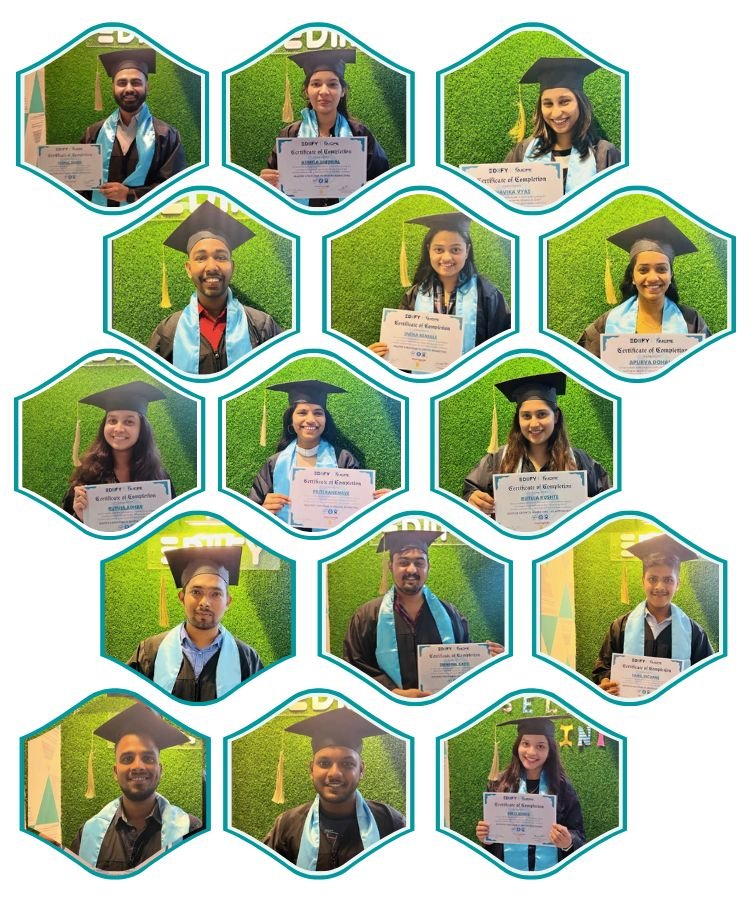
SWOT Analysis of IT Industry: A Comprehensive Guide
Feb 8, 2024 | EDIIFY Blogs
Introduction:
The Information Technology (IT) industry stands as a cornerstone of modern society, driving innovation, connectivity, and efficiency across various sectors. However, like any other industry, it faces a myriad of challenges and opportunities. In this blog, we will conduct a SWOT analysis of the IT industry to understand its current landscape and future prospects.

Strengths:
The IT industry possesses several inherent strengths that have propelled its growth and dominance:
- Innovation and Adaptability: Constant innovation in technologies like AI, blockchain, and quantum computing keeps the industry at the forefront, ensuring its relevance and competitiveness.
- Global Reach: IT companies operate on a global scale, enabling them to tap into diverse markets and foster international collaboration.
- Skilled Workforce: The industry attracts top talent worldwide, fostering creativity and driving technological advancements.
- Cost Efficiency: Through automation and digitization, IT solutions streamline processes, reduce operational costs, and offer scalable solutions at lower costs, making technology accessible to businesses of all sizes.
Take a look at the below blog SWOT analysis of the pharmaceutical industry
https://ediify.com/swot-analysis-of-pharmaceutical-industry-an-in-depth-analysis/
Weaknesses:
Despite its strengths, the IT industry grapples with certain weaknesses:
- Cybersecurity Risks: Increasing interconnectivity exposes vulnerabilities to cyber threats, leading to data breaches and financial losses.
- Dependency on Talent: The demand for specialized skills often outstrips supply, resulting in talent shortages and increased competition.
- Rapid Obsolescence: Technology evolves rapidly, rendering existing solutions obsolete and necessitating continuous investments in research and development.
- Regulatory Compliance: Compliance with data privacy laws and regulations adds complexity and costs to business operations.
Opportunities:
Amidst the challenges, the IT industry presents numerous opportunities for growth:
- Digital Transformation: The ongoing digital transformation across industries creates opportunities for IT companies to offer innovative solutions, enhancing efficiency and customer experiences.
- Emerging Technologies: Technologies like 5G, IoT, and edge computing open new avenues for innovation and disruption, enabling the development of next-generation products and services.
- Globalization: Increasing globalization facilitates expansion into new markets and strategic partnerships, driving international growth.
- Remote Work: The shift towards remote work presents opportunities for IT companies to offer remote collaboration tools and cybersecurity solutions.
Threats:
The IT industry faces several threats to its sustainability:
- Competition: Intense competition from startups and tech giants necessitates continuous differentiation and strategic positioning to maintain market share.
- Technological Disruption: Emerging technologies and disruptive business models pose challenges to incumbents, requiring adaptation to changing market dynamics.
- Geopolitical Uncertainty: Geopolitical tensions and trade disputes can disrupt supply chains and create regulatory uncertainties, impacting business operations.
- Data Privacy Concerns: Heightened concerns over data privacy and security present regulatory and reputational risks, requiring robust measures to safeguard sensitive information.
Take a view at the below blog purpose of a company’s data strategy
https://ediify.com/purpose-of-a-companys-data-strategy-a-comprehensive-overview/
Conclusion:
The SWOT analysis reveals the IT industry’s strengths, weaknesses, opportunities, and threats. While the industry faces challenges such as cybersecurity risks and talent shortages, it also enjoys strengths like innovation and global reach. By capitalizing on opportunities such as digital transformation and globalization, IT companies can navigate challenges and unlock sustainable growth. However, they must remain vigilant to threats posed by competition, technological disruption, and regulatory complexities. Through proactive strategies and innovation, the IT industry can continue to drive progress and shape the future of society.














